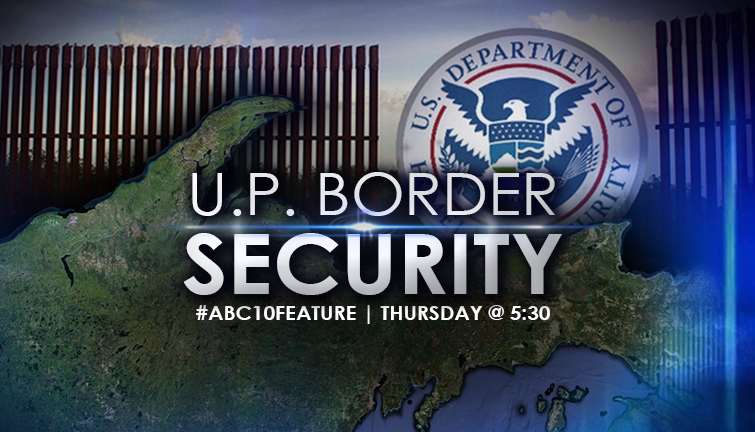Border Security | ABC 10 Feature

SAULT STE. MARIE — The topic of border security has swept the nation in recent months under President Trump’s administration. Although the main focus has been on the Mexico border, what about here in the U.P., the border that divides us from Canada? In this week’s ABC 10 Feature, Melanie Palmer traveled over the international border to see what measures are taken to secure the American/Canadian border in part one of this two part series.
It’s a topic in recent news that has been controversial and abundant, border security. But what about its impact on the Upper Peninsula?
In the distance, across from Lake Superior stands Windsor, Ontario. The border between the two countries is the longest undefended border in the world.
“We’ll routinely patrol the border, especially here in Sault Ste. Marie where due to the proximity of the international border, it really does pose a vulnerability,” said Enforcement Division Chief of the U.S. Coast Guard Sault Ste. Marie Sector, Joe Prado.
Maintaining a safe border between these two countries takes the help of several different agencies collaborating with one another.
“Department of Homeland Security plays a vital role in border security. It’s a large component of customers and border protection, which includes the offset field operations, U.S. border patrol, and our air/marine operations. It’s a comprehensive border security agency whose primary goal is to prevent terrorists from entering the country and along with our DHS sister agency, the U.S. Coast Guard, we compromise a team effort, a comprehensive border security team to safeguard our borders,” said Chief Officer of U.S. Customs and Border Patrol. Ken Hammond.
Each department plays a key role in determining border entry. In regards to accessibility when crossing the border, this slightly differs depending on the mode of transportation. For travelers crossing the border via vehicle over the Canada toll bridge, that process is fairly easy. This consists of pulling out your passport and showing it to the border patrol personnel, but for the coast guard dealing with water vessels, that process is slightly different.
“We do send teams out to foreign ports overseas and they will do surveys and assessments of those ports to determine the risks that vessels coming from those ports may pose to U.S. waters. Closer to home, we do actively patrol our waters and try to find violations of our nation’s immigrations and customs laws,” said Prado.
Risk assessments are also conducted of all the vessels coming in to the port. The coast guard might then implement restrictions or requirements for inspections to mitigate any safety, environmental, or national security risks that a vessel could pose in the U.S. When the seasons change, the border still stands.
“In the winter months, once that water freezes and you cross that imaginary line, you’ve made an illegal entry into Canada or the United States,” said United States Border Patrol–Detroit Sector Division Chief, Jeffrey Stalnaker.
When water vessels cross the border, they are required to check in at the designated ports. If failure to report your entry is proceeded, consequences can arise depending on your intentions.
“In Sault Ste. Marie if people have not checked in from coming across from Canada by boat or traveling the frozen water ways on an ice bridge or snowmobile and they don’t check in, they are crossing in the international boundary illegally so they’ll be stopped, they’ll be questioned, they’ll be searched,” said United States Border Patrol–Sault Ste. Marie Patrol Agent in Charge, Shawn Wilson.
According to Wilson, it is common to see fisherman who have crossed an international border and are unsure of their location. In these cases, where the fisherman has no intent to enter the country, no punishment will be faced. If the boaters continue to proceed in the foreign country, then necessary actions will be taken.
Although previous national news stories have expressed an increase in immigrants fleeing the U.S. to Quebec, these reports are filed as illegal and have not been reported or tracked near the Sault Ste. Marie port of entry due to water completely lining the border.
“In regards to an individual that would try to exit the country versus an area designated as a port of entry, like people are currently seeing in the news in Quebec right now, we are seeing that but we have no way to gage that or get statistics on that,” said Stalnaker.
Tomorrow night, I will have part two of this series where I share my experience crossing over the international border, the epidemic of drug smuggling, and how the U.S. and Canada work together to maintain a safe border.
